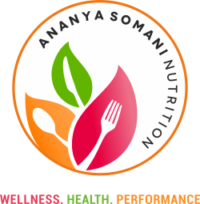Our mental state directly affects the amount and type of food we feel like consuming.
All kinds of emotions can compel us to eat, from unwanted moods such as frustration, anxiety, worry or feeling down, to positive emotions like excitement, celebration or anticipation. Even neutral feelings such as boredom and apathy can be a cause to eat.
Even different kinds of foods can be attached to different emotions (give example). This can become a problem in certain situations when one eats in response to a negative emotion, in order to soothe themselves, rather than identifying, expressing and facing that emotion.
Emotional hunger is your body’s way of telling you that you need comfort or something soothing.
This is different from physical hunger, which occurs when the brain sends a signal to the body indicating a physical need for food and energy.
Signs of physical hunger:
- Stomach growling
- Usually occurs several hours after last meal
- Gradual onset
- Low on energy
- Usually satisfied after eating
- Desire for type of food may be less specific
Signs of emotional hunger:
- Strong cravings for specific food items
- Comes on suddenly
- Urgent need to be satisfied
- Can occur right after a meal
- Not always satisfied after eating
How to identify the difference
When you feel hungry, pause and try to identify what’s going on first. Are you experiencing physical hunger or is there any emotion underlying it. A couple of pointers that can help
- How long has it been since your last meal/snack? Longer than 2-3 hours can be a sign you are physically hungry, reflect on this in terms of your usual meal pattern.
- Are you experiencing any signs of physical hunger e.g. emptiness, stomach growling. If so, you need to eat.
- Ask yourself, what do I want to eat? Is it a very specific food/dish? That can sometimes indicate a craving that could be emotionally driven.
- Are you experiencing any strong emotion e.g. upset, happy, angry, grief.
- Is there anything else you can do, to address the underlying emotions? For example, journaling, movement, speaking with a loved one
Identifying and distinguishing the type of hunger may need to be learned. Give it time, and practice taking a pause before, during eating to tune in further with your hunger and fullness cues, eating mindfully. Practice in regular meal scenarios first and then it will be easier to implement in more challenging situations, when emotions are elevated or similar.

